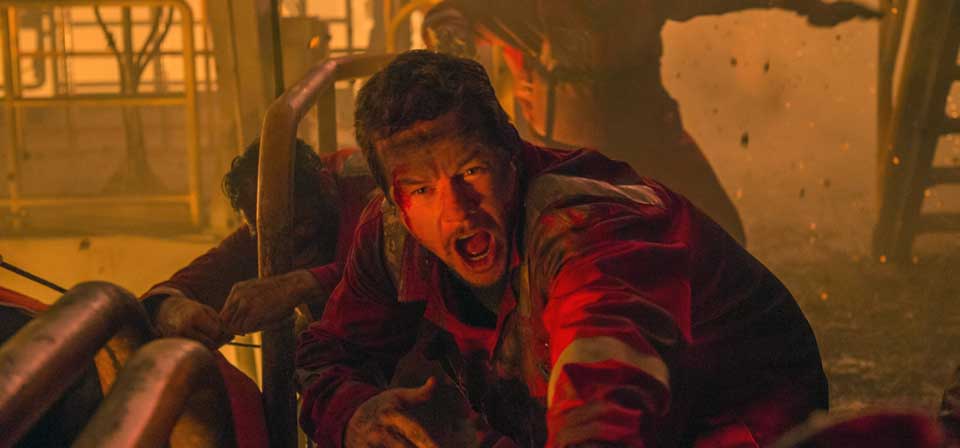Reviews

Fantastic Beasts and Where to Find Them (2016)
The fact is, moving from the Harry Potter films to Fantastic Beasts feels a bit like moving from the original Star Wars trilogy to the Star Wars prequels.

Hacksaw Ridge (2016)
Gibson crafts a resolutely traditional exercise in Hollywood mythmaking: a tale of a man who stoically endures accusations of cowardice before being vindicated as the bravest of all, a man of integrity who stands by his unpopular principles regardless of the consequences; a pious man whose sincere faith eventually wins the respect and admiration of his less devout comrades.

Doctor Strange (2016)
The paradox of contemporary Hollywood blockbusters is that in our time virtually anything conceivable, no matter how wild and out there, can be put on the screen, but it almost never is.

The Birth of a Nation (2016)
The prominent, polyvalent exploration of the uses of religion and especially Scripture, both to condone slavery and to condemn it, to sedate slaves and to inflame them, is one of the most striking and welcome things about the film.

It’s a Wonderful Life (1946)
The truth is that It’s a Wonderful Life is both darker and more subversive than its popular reputation as cheery holiday “Capra-corn” would suggest, and more robustly hopeful than cynics and hipster deconstructionists would have it.

Miss Peregrine’s Home for Peculiar Children (2016)
1999 was a very good year for film, and how much more peculiar Tim Burton’s Miss Peregrine’s Home for Peculiar Children might have been had it come out that year, before the X-Men and Harry Potter franchises were launched in 2000 and 2001, respectively.

Deepwater Horizon (2016)
The film sketches in these characters just enough to hold the story together. What really interests Berg is exploring how the disaster happened, what it was like, and how those 126 people responded, for better and for worse.

Queen of Katwe (2016)
There are so many reasons Queen of Katwe shouldn’t even exist, and just thinking about them all makes me even more vexed at Hollywood for its desperate obsession with exhausted franchise fare when there are winning and wonderful stories like this to be told.

Hillsong – Let Hope Rise (2016)
Possibly the best and most cinematic sequence in Hillsong – Let Hope Rise is a montage that strikingly captures how the music of the Australian Evangelical church-based praise band Hillsong United touches, and unites, people all around the world.

Sully (2016)
Many actors come to own the roles they play so completely that once you see them, you can’t imagine anyone else in the part. Tom Hanks plays roles in which you can’t imagine anyone else even before you see him.

The Iron Giant (1999)
There is a purity to Brad Bird’s directorial debut The Iron Giant, based on the British poet Ted Hughes’ children’s novel The Iron Man, that is inconceivable in the family film landscape of today.

Greater (2016)
Greater has three surprises, which is three more than most faith-based films, particularly of the inspirational sports-movie variety.

Kubo and the Two Strings (2016)
Kubo and the Two Strings comes close to being a masterpiece, and one of the two best American animated films in years, the other being Pixar’s Inside Out.

Ben-Hur (2016)
On paper, and sometimes even on screen, there’s some promise and potential in this remake of Ben-Hur.

Pete’s Dragon (2016)
I’m almost afraid to say it out loud, or even in writing, but with Pete’s Dragon joining The Jungle Book and Cinderella, Disney may be giving the lie to the old cliché “They don’t make ’em like that any more.”

Jason Bourne (2016)
The world has changed since 2007, and not only in the ways the filmmakers are self-consciously trying to engage: concerns about cyber-security, online privacy, government spying and the pressure on tech companies to give the government whatever information or access it wants.

Star Trek Beyond (2016)
It’s not saying much, but Star Trek Beyond is probably this summer’s most entertaining popcorn film to date.

The Secret Life of Pets (2016)
The first act of The Secret Life of Pets leans on a style of humor that we might call “anthropomorphic observational comedy.”

The Innocents (2016)
The Innocents opens in a Benedictine convent in Poland in 1945, shortly after the event known, not without bitter irony, as the liberation of Poland by the Soviet army.

Finding Dory (2016)
Hank the octopus is a particular standout. Hank’s squash-and-stretch movements push computer animation to yet another high-water mark, and his mad skills are highly entertaining — so entertaining, in fact, that I kind of wish the movie had been about him.
Recent
Home Video
Copyright © 2000– Steven D. Greydanus. All rights reserved.